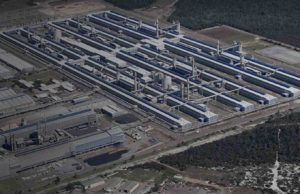California has thrust itself to the vanguard of the global energy storage market after its California Public Utilities Commission unanimously approved a proposal to bring 1.325GW of energy storage by 2020.
It is the biggest regulatory decision of its kind in the world, and will have a direct impact on investor owned utilities, Pacific Gas & Electric, Southern California Edison and San Diego Gas & Electric.
Each will be required to install a range of “cost effective” storage options – both at the grid level and beyind the meter – and using a range of technologies such as batteries and thermal.
California currently has large-scale pumped hydro storage but only 35MW of installed energy storage capacity. The CPUC, says market experts, has now arrived at a clear conclusion: energy storage is a vital part of the grid of the future, and should be deployed right away.
Some of the projects that will be eligible in what is expected to be a $3 billion program include an 8MW lithium ion battery array at the Tehachapi Wind farm, and the 150MW Rice facility being built by Solar Reserve, which will feature molten salt storage for a solar tower array similar to the Crescent Dunes facility now being built in Nevada.
“I believe energy storage has great potential to help us address grid reliability and renewables integration issues,” said commissioner Carla Peterman, who headed the CPUC’s push for storage. The CPUC described storage as a “game changer that can help people manage their energy use and expand the capacity of renewable resources.”
Nancy Skinner, a Congresswomean who sponsored the bill, AB 2514, said the move would increase the reliability of the electrical grid and optimise solar, wind and other renewables. “This decision makes our state the global leader in energy storage, spurring innovation and creating jobs across California.”
The first storage facilities are expected to come online as early as 2015, and will meet grid needs caused by the rising share of renewables, the phasing out of dirtier power plants, and the deferring of expensive transmission and distribution upgrades.
Greentech Media reports that California is a “hotbed” for grid batteries, ranging from massive utility-operated sodium-sulfur and lithium-ion batteries to cabinet-sized battery arrays sitting inside solar-equipped buildings and homes.
There are also thermal energy storage systems that turn rooftop air conditioners and campus-wide cogeneration plants into virtual grid energy-shifting arrays, and the compressed-air energy storage (CAES) system being developed by PG&E, as well as the the plug-in electrical vehicle storage projects underway at SCE, and microgrid projects in SDG&E territory.
However, Greentech Media says one challenge will be to match the technologies with the right set of regulatory and market mechanisms to allow them to be measured in terms of their costs and benefits.
Utilities will be allowed to employ energy storage for a variety of functions throughout the electric power system, such as capacity, ancillary services, and peak shaving, which in turn will provide real-world data for further market expansion.
Energy storage systems can be deployed in three “grid domains”: transmission-interconnected, distribution-interconnected and behind-the-meter-interconnected.
Large scale pumped storage projects of more than 50MW are excluded from the target, but the CPUC will hold a workshop to further explore the operational characteristics and uses for pumped storage projects.
“Some years from now we will look back in history and realize that (this decision) profoundly changed the way we operate the grid,” said Janice Lin, Executive Director of the California Energy Storage Alliance. “Today’s momentous decision which will optimize our electric power system, lower costs for consumers, enhance reliability and decrease pollution.”








